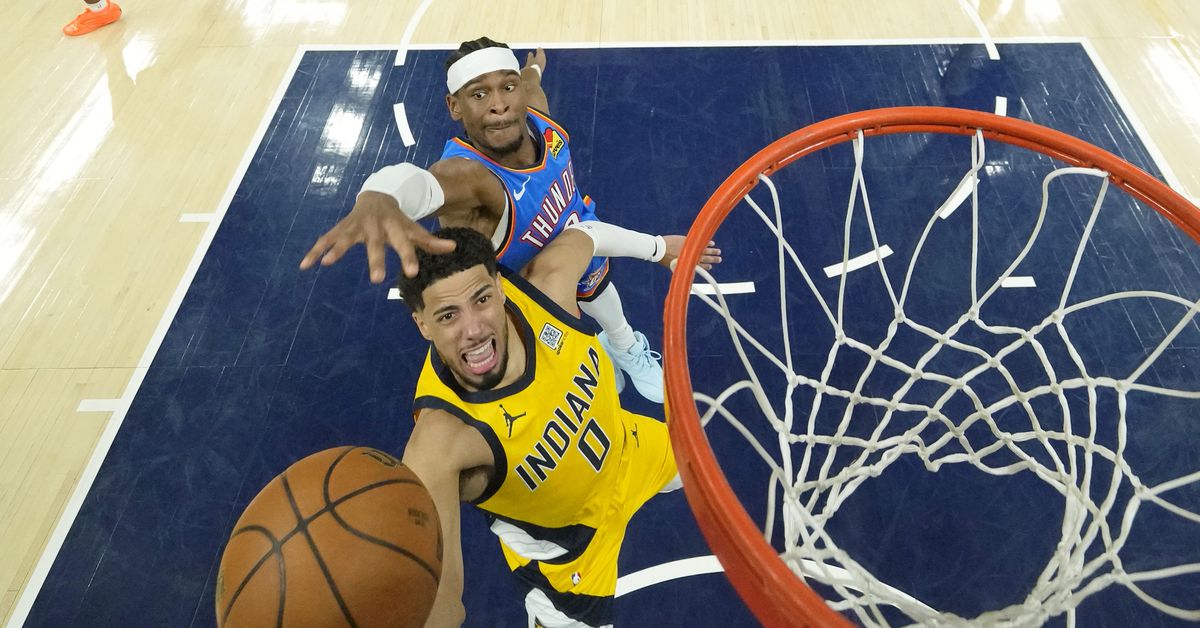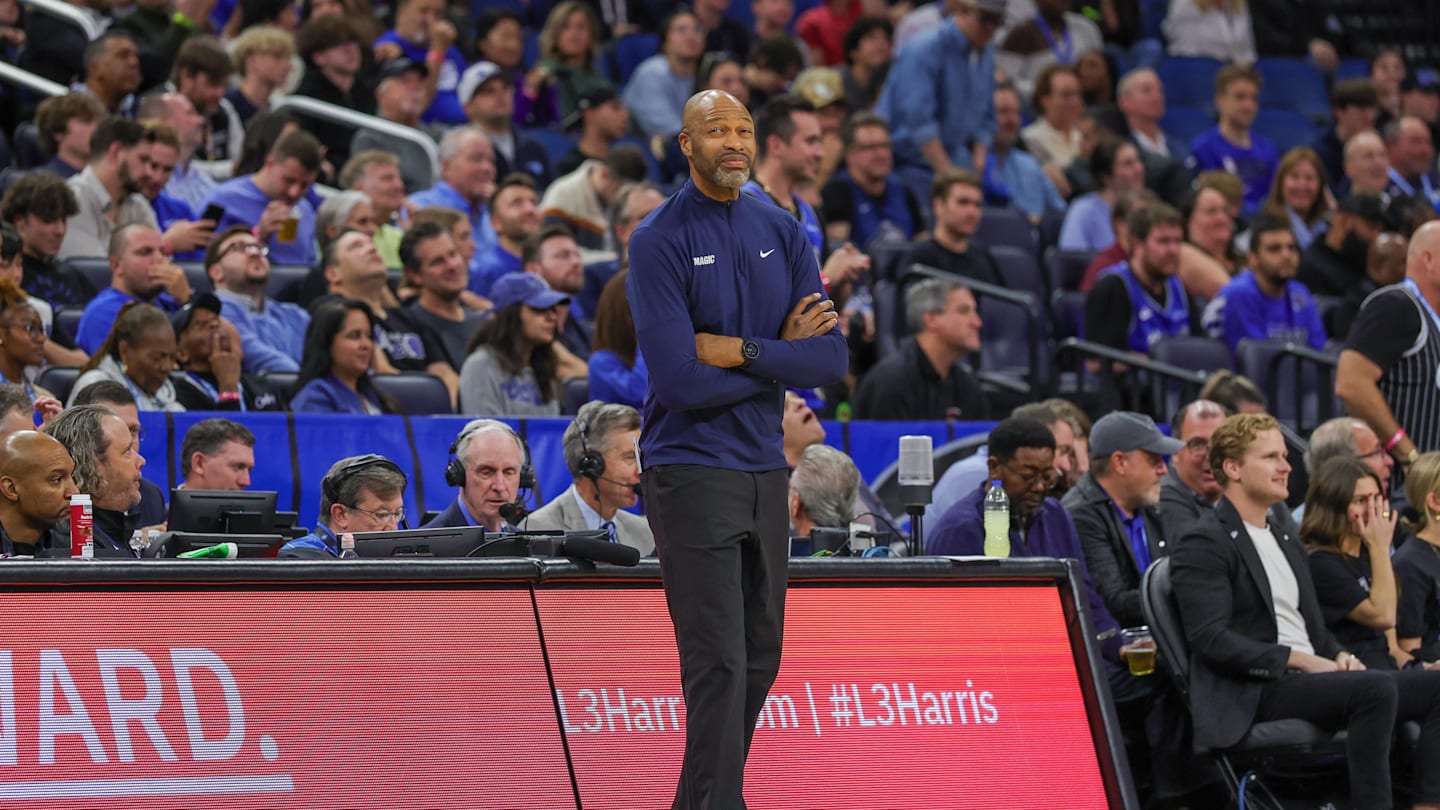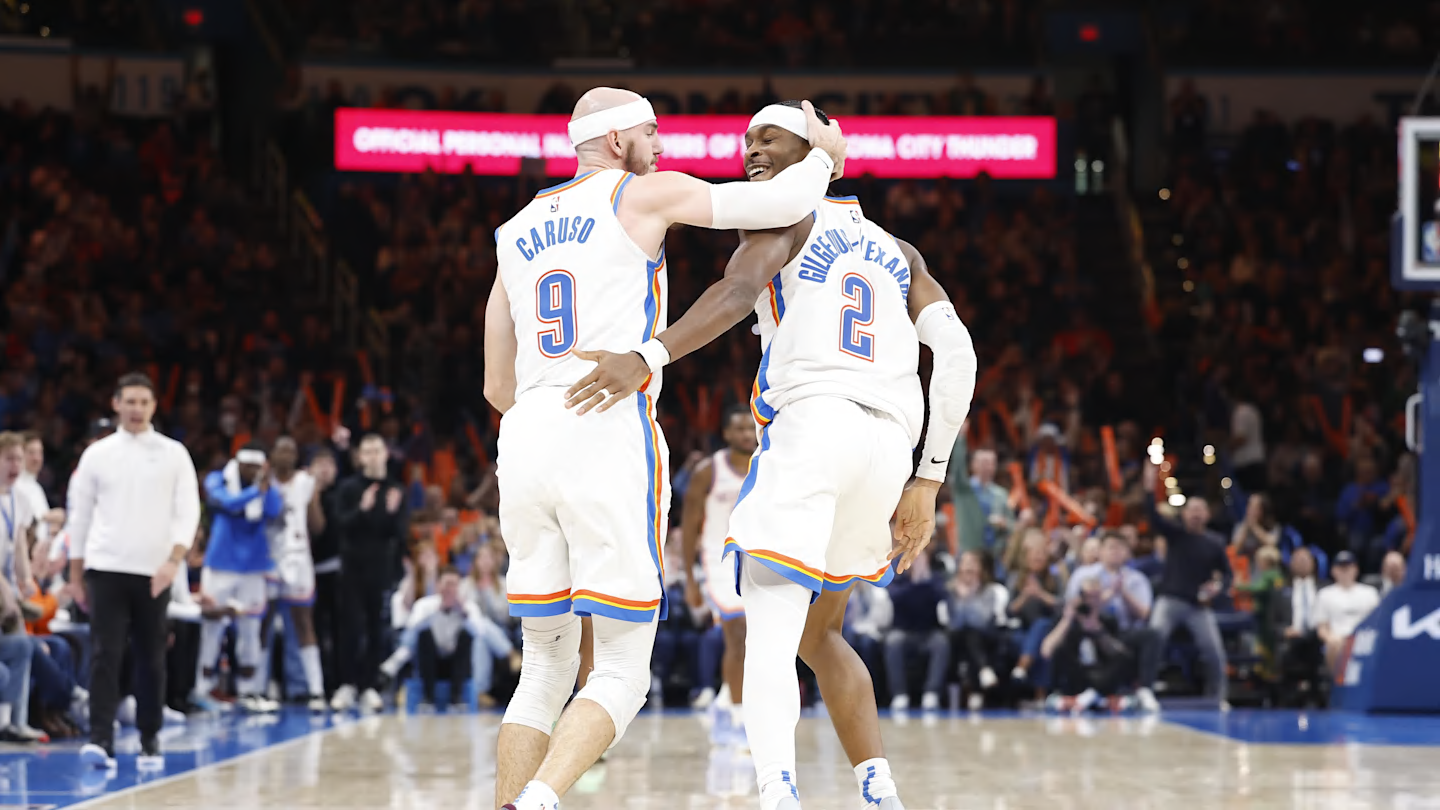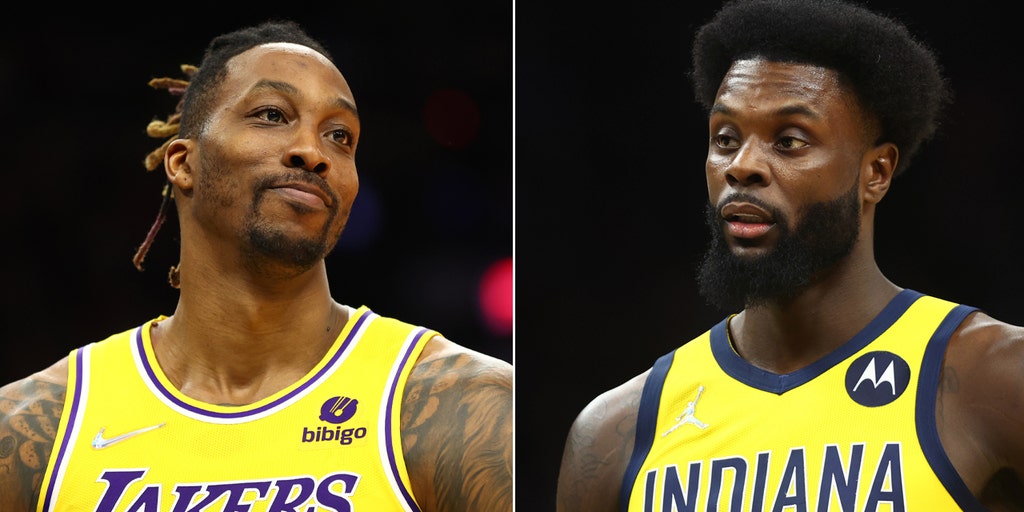
When the Nuggets were up 2-1 over the Thunder in their second round match-up, and leading at home in the second half of Game Four, I booked the Nuggets into the NBA Finals, and also cleverly booked a flight to Colorado. While that assumption did not age well, I had the cover story of my brother (who lives in Colorado) and his June 6 birthday celebration as an excuse for the trip to Colorado, which meant I did not suffer the humiliation of cancelling the round trip ticket.
However, my journey to Colorado during the start of the Finals made it difficult to do my normal game-by-game reporting for the Finals. That reporting had started well before I joined Pounding the Rock over a decade ago. Indeed, my pre-Pounding the Rock piece about the Manu Game in the 2013 Finals (Game Five at home, a big Spurs win fueled by Manu, which unfortunately led to the Ray Allen Game) led to my big signing bonus with PtR, and the rest is history.
This NBA Finals between the Pacers and Thunder has also been historic, even though it is not close to over. In Game Three, T.J. McConnell became the first bench player in Finals history with 10 points, 5 assists and 5 steals in a game. In Game Four, Alex Caruso became the first bench player in NBA Finals history with 20 points and 5 steals. Of course, getting 5 steals in a Finals game is a lot, even for starters. Only eight players, all starters, have gotten more than 5 steals in a Finals game.
While I will talk a little bit more about stats in a bit, we should all be grateful that this Finals has been so entertaining. Going into it, a lot of pundits (another interesting English word) were predicting that OKC would win in a tidy five games. With the series at 2-2, that won’t happen. Going into Game Four, with the Pacers up 2-1, I did a quick survey of my hoops buddies as to which team would win the championship. The consensus, though not unanimous, was the Pacers. (I still thought OKC would win.) At the end of the third quarter of Game Four, the consensus seemed to be right.
But the Pacers simply stopped scoring (only 18 points in the fourth quarter) and SGA made some big shots (including the go-ahead shot on what looked like both a push-off and a travel).
As a result, in the space of about 8 minutes, the Pacers went from what felt like a 90% chance to go up 3-1 and a likely championship, to having to win at least once on the road AND hold serve at home in Game Six. Going up 3-1 would have been the better choice.
I am still rooting for the Pacers, of course, but I would feel better about their chances if they had been able to score in the fourth quarter of Game Four like they did in the first quarter (35 points).
Other thoughts
- The latter part of the regular season and the early playoffs were dominated by serious injuries to top players. Kyrie Irving for the Mavs, Dame Lillard with the Bucks, Steph Curry on the Warriors and most devastating, Jason Tatum on the defending champion Celtics. But these Finals have not yet been cursed by the injury bug as both teams’ rotation players are all healthy. However, for a moment in Game Four it looked like Chet Holmgren might have seriously sprained his ankle. Keep an eye on that. That ankle might be more of a factor in Game Five once the adrenaline wears off and swelling replaces it.
- The Holmgen issue raises a different issue I have not seen discussed elsewhere. While the Pacers have excellent depth, they don’t have a backup 5. Their starting center, Myles Turner, is a very good player, even though he has been hit or miss in the Finals (mostly miss — 6-21 in the last two games). But when Turner is not in the game, they simply don’t have a backup center. Instead, when he’s out, the Pacers replace him with guys who are best described as 3/4 instead of 4/5 — Pascal Siakam and Obi Toppin. Despite the fact that OKC has a true 5 in Hartenstein and the 7’1” Holmgren as a 4/5, the Pacers lack of size has not been a problem. (But see the next comment.)
- One of my first posts after I joined PtR was entitled “How a Coach Reads a Box Score”. One of the primary things I wrote was that total rebounds do not reveal much about the game — the team that shoots better should outrebound the other team. Instead, I look at percentage of missed shots that the offensive team recovers. Roughly speaking, a percentage between 25% and 33% is fairly normal. In Game Four, OKC had 12 offensive rebounds on its 41 missed shots — a normal-ish 29%. But the Pacers had only 7 offensive boards on 46 missed shots: an atrocious 15%. Put another way, that gave OKC five extra possessions. OKC also had two fewer turnovers, for a total of seven extra possessions — a big difference in a close game.
- Another crucial difference in close games is free throws. Both teams shot 80% from the line during the regular season. Friday night, OKC went 34-38, 89.5%. That is about 4 points more than their season average for that number of free throws — made while on the road with the entire arena at a million decibels. The Pacers, shooting in relative silence, shot 76%, about a point less than what would be expected even though the arena was not screaming at them as they shot. As with offensive rebounds, those 5 extra points are a huge deal in a close game. (When I played in high school, home crowds would maintain a respectful silence when either team shot free throws. That politeness seems so odd today. Of course, that was a long time ago.)
- Speaking of free throws, Tyrese Haliburton shot three of them Friday night. Amazingly, they were the first free throws he had taken the Finals. Great players get to the free throw line. During the regular season, Haliburton averaged only three free throws per game. As much as I like Haliburton as a player, he needs to get to the line more if he wants to be a truly elite player. See, for instance, Shai Gilgeous-Alexander’s 10 free throws in Game Four. He made all of them.
- In Game Three, the Thunder shot 47% overall, 45.5% from three, took 30 free throws and outrebounded the Pacers by 6. In Game Four, the Thunder made only three 3-pointers on 3 for 18 shooting (19%) with only 10 assists for the entire game. The Thunder lost Game Three and won Game Four.
- I have not yet mentioned the best things about these Finals. These teams are truly competing as if each game is a game seven — for all 48 minutes. The Pacers are picking up full court, pressuring the Thunder all over the court and running it back the other way once they get the ball. On the other side, the Thunder are playing some of the best defense I have ever seen. In the fourth quarter of Game Four, the Pacers offense (which is world class), spent much of each offensive possession closer to the mid-court line than the basket. And the shots they did get were often rushed in order to beat the shot clock. When I was coaching, I used to tell my players to compete each possession as if it was the last possession in a tied game. The Thunder and the Pacers are doing that. Which is why, even though this is a battle between “small market teams” without any of the league’s legacy players, this Finals have been so entertaining for true hoops fans.
I really hope this goes to seven games. Unless the Pacers steal Game Five in OKC tonight. If that happens, I hope the Finals end in six, in front of the Pacers’ home crowd. Hoosiers.


